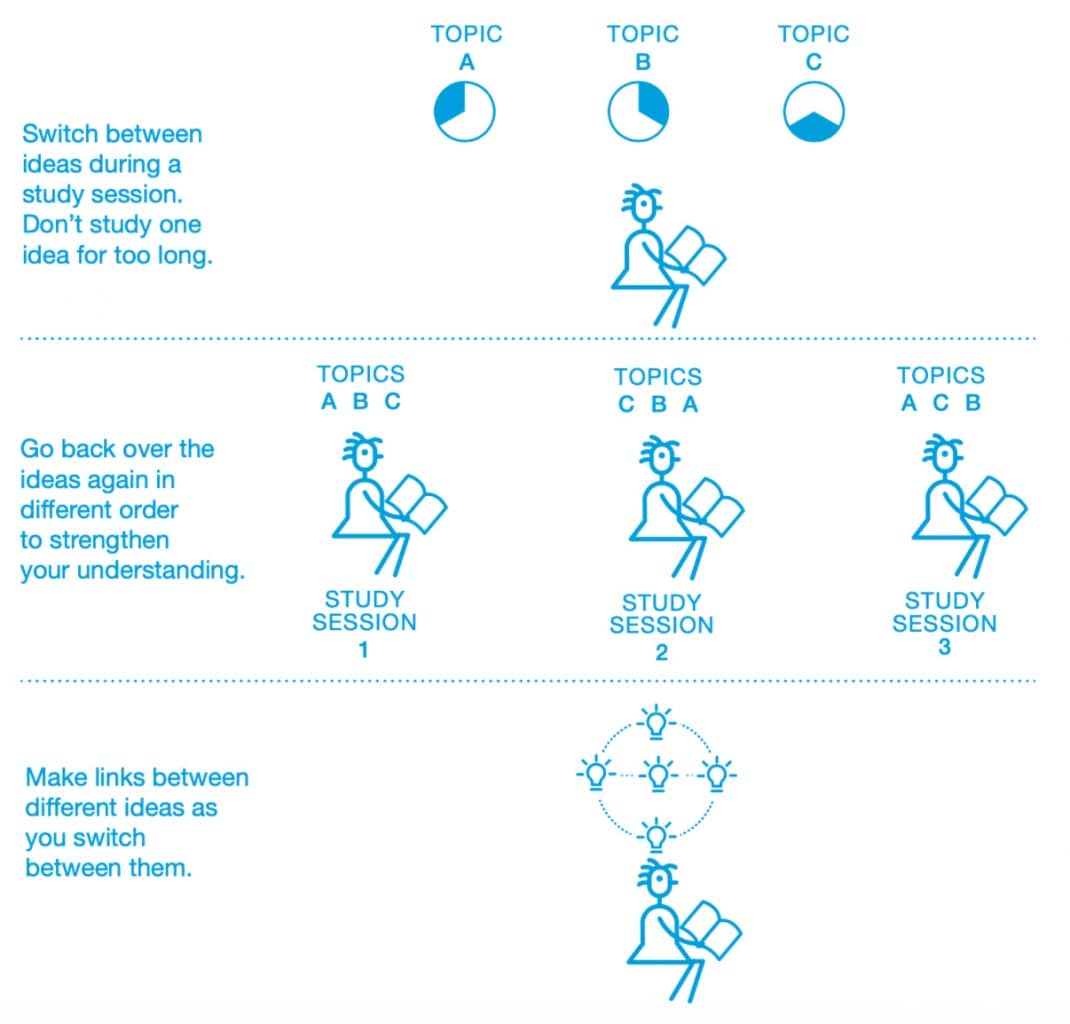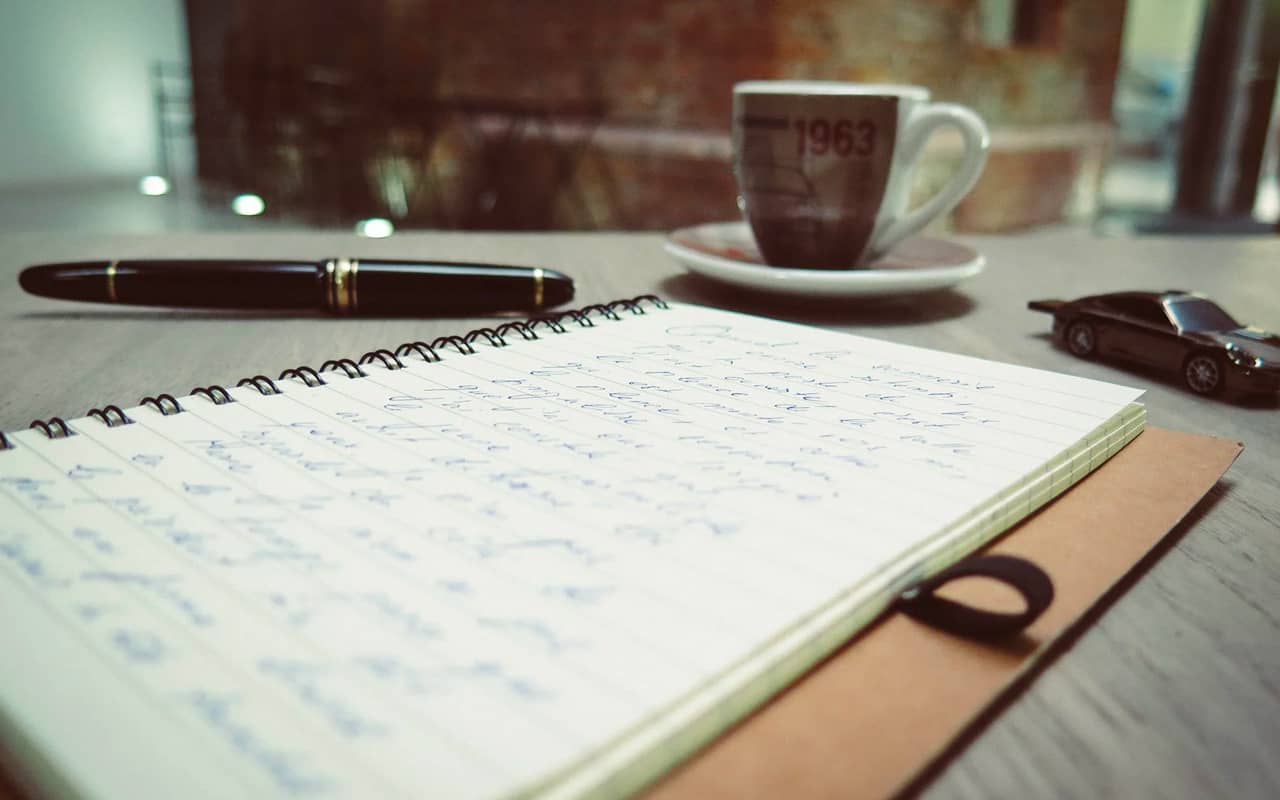 Want to know a secret about people who seem to remember everything they read?
Want to know a secret about people who seem to remember everything they read?
It’s simple and empowering:
No one remembers “everything.”
In fact, brilliant readers deliberately stop themselves from pursuing the unnecessary and unhelpful fantasy that everything can be remembered.
Instead, effective readers who remember a ton have learned how to isolate the most important parts of books. This simple practice is in fact what enables them to spend their time remembering the ideas, facts and other details that matter.
Once they’ve identified only the most important information, they use the best memory science to effortlessly usher the key details into long term memory.
The best part?
Your brain will automatically remember more of the incidental information you don’t memorize when you read based on the key ways I’m about to share with you.
Anyone remember more of what they read, and in this post, I’ll show you how.
Ready?
I Can’t Remember What I Read… Here’s Why
There are quite a few factors that explain the difficulties with remembering what you read.
For example, many people suffer from low vocabulary, ruining their comprehension.
Other people don’t set reading goals, nor do they set specific amounts of time aside for USSR:
- Uninterrupted
- Sustained
- Silent
- Reading
Then there are those who fall into the pseudoscientific traps of “speed reading.” They waste time trying to stop subvocalization. They are misled about concepts like skimming and scanning. They remain slow readers because no one told them the truth about what it really takes to read faster.
All that’s about to change for you.
Right now.
How To Remember What You Read: 11 Proven Steps
I’m about to share with you a number of steps that will help you remember what you read.
There’s no perfect order, and you don’t have to incorporate them all at once.
However, each one is important. And you don’t have to take my word for it.
For one thing, I’d got a PhD. And that means I had to read a lot of books very well.
But I’m also a scientific thinker. I encourage you to be skeptical and follow-up everything beyond the research I’ve included.
And that’s a very important tip for you: Follow-up with your own research.
Doing so will alway helps you remember more because research has “re” in it for a reason.
For example, as I discussed on the Magnetic Memory Method Podcast with John Danaher, students don’t take enough responsibility for their own learning. As this scientific study puts it, students bring a ton of “resistance” to learning, which leads to teachers being afraid to properly require active learning techniques that are known to produce better results.
To complicate the matter further, we know from this study that many students were harmed when left to their own devices during the pandemic. Doing research on their own as a deeply honored learning strategy would have reduced the damage done to millions of students. They lost years of practice that will have implications for their memory skills for the rest of their lives.
That’s why I suggest you do a lot of additional research starting as soon as possible. There are many techniques for this type of active reading, and research above all gives you memory-forming repetition of the core concepts you’re learning while expanding the context.
If there’s one principle I want you to remember it’s this:
Content may be king. But context is god.
And the more you expand the context of your reading, the more you’ll remember.
With that governing concept in mind, let’s get started with the steps that will help you remember and understand what you read.
One: Know Your What And Why
Many people forget what they’re reading because they’re far too passive.
But as Roger Seip points out in Train Your Brain For Success, by knowing what kind of material you’re reading, you can switch “gears.”
The two questions you can start with every time you’re reading are:
- What am I reading?
- Why am I reading it?
This might sound simplistic to you, but how often do you ask such questions intentionally? You can have all the memory improvement strategies in the world, but if you don’t know why what you’re reading is important and what category it belongs to, remembering is bound to be difficult.
But when you know what you’re reading and why, you can think about the “gear” you need to be in.
For example, when I’m reading a scientific research article, I know that I need to hyper-focus my mind to deal with difficult terminology, graphs, numbers and counterintuitive findings.
I also sometimes need to perform a quick “attitude check,” because many scientists write poorly, or at least in ways that aren’t particularly engaging.
But with the right attitude in place, I can brace myself for reading certain parts two or three times if necessary. And since my mission is to help others understand memory science, keeping that “why” in mind helps attune my focused attention to the task.
Another way to think about the “gears” concept comes from Mortimer Adler. He talks about:
- Elementary reading
- Inspectional reading (much like priming, discussed below)
- Analytical reading
- Syntopical reading (or summarizing, see below)
Key Takeaway: Keeping focused on what and why you’re reading helps certain details leap out at you. This is especially important for giving you clues on where you should focus for follow-up research.
Two: Question The Material Deeply
Asking questions while you read makes the process more experiential.
This is very important because, as neuroscientist Eric Kandel demonstrated with his research in the 1970s, “synapses change with experience.”
This means that if you want to change your brain from one that merely reads to one that remembers, you need to experience the reading.
We’ll talk about a few ways to do this, but questioning is one of the most direct.
You’ll probably know these questions:
- Who?
- What?
- When?
- Where?
- Why?
- How?
They are just as important to learners now as they were when the Renaissance memory master Giordano Bruno put these questions on a memory wheel as they are to us now. But how often do you actually deploy these simple questions while you’re reading?
Start getting into the habit of asking these core questions much more often – literally on each and every page.
You can also go further and integrate what you’re reading even more deeply in memory by asking more intensive questions. Like these:
- What is the author’s intention or agenda?
- According to whose authority does the author appeal?
- Who benefits if this is true?
- When might this statement not be true?
- What’s the counterargument?
- What are the consequences? What changes if this is true?
I regularly used this deeper form of questioning while studying for my PhD.
The more you ask these more advanced questions, the more you’ll naturally remember because you are experiencing the reading.
Key Takeaway: These questions are useful to ask while reading, but also before and after you read a book.
When you voluntarily ask these questions after reading in particular, you’ll get the benefits of active recall. This process is very important for memory formation.
Three: Get Your Reading Ready For “Prime” Time
Have you ever heard of priming?
Some people call it “pre-reading,” but I don’t think that term quite aligns with the science that supports the idea.
Whether you call it priming or pre-reading, it’s one of the few useful techniques from the world of speed reading.
In brief, it means that you examine the parts of a book before you start reading it. The exact process I usually follow is never the same because not all books are identical. But it’s generally something like this:
- Back cover analysis
- Colophon page
- Index & works cited/bibliography
- Table of contents
- Conclusion
- Introduction
- “Picture walk” to look through illustrations, diagrams and other images
Why go through these steps before reading?
Because plenty of scientific research demonstrates that it works. As Yantis and Meyer put it:
“The effects of context upon the speed and accuracy of memory retrieval are well documented in the literature on semantic and episodic memory. Word naming and lexical decisions are facilitated if subjects have been exposed to other semantically or episodically related verbal material.”
In other words, “priming” helps you remember more because exposing yourself to these parts of the book helps your semantic and episodic memory. It’s like looking at the layout of a store before trying to find aisle five.
Frankly, I rarely read a book without priming it first, including fiction.
If you’d like to see the skill applied to a book with some “next level” memory tricks, check this out:
Four: Interleaving
Many readers pick up a book and plow through it from beginning to end.
This is a huge mistake.
We know from a lot of research that you will remember more if you take frequent breaks and switch between topics.
For this reason, I tend to read three books at a time. I’ll read a chapter from one book, a chapter from the next and so on, rotating between them.
The trick is to mentally compare what you’re reading between the books. This will help your brain make connections that facilitate greater remembering.
Yana Weinstein and her co-authors make how this works and why very clear in their book, Understanding How We Learn: A Visual Guide.

As Doug Rohrer has shown, interleaving not only helps you remember more by making connections. It also helps you distinguish between concepts and even objects that appear very similar.
You can also combine interleaving with how you schedule your reading and studying. For example, imagine you have three books you need to study and you have three days to prepare for an exam:
- Session One: Book A, B and C
- Session Two: Book B, C and A
- Session Three: Book C, A and B
It might seem like a minor thing, but approaching your reading out of order has been shown to help you remember more.
Five: Less Is More When Taking Notes
Many readers chew up tons of time by highlighting or filling up pages with notes.
Although there’s nothing exactly wrong with these approaches, they shouldn’t be necessary.
As I talk about in how to memorize a textbook, if you create simple limits while taking notes, you’ll be able to remember more.
My personal rule of thumb is to pick a number. Usually I decide that I will only take down 3-5 notes per chapter in a book.
Now, I might change my mind if something really important leaps out at me. But generally, I stick with the plan.
Here’s why:
- By focusing only on big details, I wind up memorizing the most important parts
- Thanks to priming, these connect to the overarching concept of the book with greater ease
- With interleaving in place, these big ideas are easier to connect with the other books I’m reading
Also, using index cards helps with physically rearranging the cards in space that enhances interleaving.
And it makes it easy to strategically chart out what we’re going to memorize and in which order or priority when we get to one of the most powerful techniques for expanding your mind and memory of them all.
Six: The Memory Palace Network
Let’s say you’ve read ten books and you’ve followed my note taking advice.
The next step is to commit everything you need to memory.
There are many mnemonic strategies to consider. But my favorite is the Memory Palace technique.
You can apply this technique to what you read, but let me share the way I used it when the stakes were high.
I completed my Ph.D. in Humanities at York University. I read many philosophers for my two field exams and was responsible for even more when defending my dissertation.
To keep up with all the details, I created a Memory Palace for each philosopher I studied. For example, I had:
- An Aristotle Memory Palace
- A George Bataille Memory Palace
- A Cicero Memory Palace
- A Jacques Derrida Memory Palace
- Etc.
In some cases, I had more than one Memory Palace per philosopher. In these cases, I would base the Memory Palace on the philosopher and memorize the name of the book on the first station.
Then, I would “follow” the philosophers through the Memory Palaces, treating each as a “Bridging Figure.”
The alphabet is one of the most powerful memory tools we have, and that is why I linked my Memory Palaces in this way.
Key Takeaway: Using a “Bridging Figure” to memorize key details transforms passive reading into a deeply engaging and transformative experience.
Remember: science demonstrates that we learn and remember more when reading is experiential.
Seven: Multisensory Connections
As you’re reading and especially when you’re using memory techniques like the Memory Palace, you want to deepen the experiential aspect.
One of the most direct and fun ways to do this is to use your senses.
For example, I wanted to remember Aristotle’s three types of friendship. One of them is the friendship of utility, the kind where you basically trade favors with each other.
To rapidly remember this detail, I imagined being friends with Aristotle dressed as a utility repair man. To make it multisensory, I imagined:
- Kinesthetic – the feeling of shaking his hand
- Auditory – the sound of his voice as we arranged an exchange
- Visual – how he looked in his uniform
- Emotional – the feeling of a bit of sadness that we weren’t true friends
- Conceptual – the idea that this was just one of three friendships Aristotle discusses
- Olfactory – I imagined the smell of oil on Aristotle’s uniform
- Gustatory – I imagined him eating his lunch alone, also feeling sad
- Spatial – I imagined how tall he was
Taking just a few seconds to go through each of these sensory associations helped drill the fact deep into my memory quickly.

Key Takeaway: You don’t have to use the KAVE COGS formula in this exact way or in this order. That’s the pattern I came up with for myself and it works for me.
But put some time into the multisensory aspects that make sense to you. Then, make it a habit to deploy them when you’re reading and remembering. You’ll thank me for the boost it creates for you.
Eight: Summarize & Discuss
So far, you’ve learned how to read and remember more. But in order to bring it all together in a way that forms long term knowledge, you need to summarize what you’ve read.
When I went to grad school, I had a professor named Katey Anderson who made me read dozens of books and prove I’d read them by explaining their content in my own words.
And this is how you wind up remembering more. Not just repeating the key points and terms, but coming up with your own.
Dr. Anderson required at least 250-500 words of summary, which is about right. You don’t have to reproduce the whole book in your notes – and you won’t have if you’ve followed my recommendations above.
I usually wrote my summaries by hand. Good thing too. Researchers have shown much more brain activity in those who take notes on paper. No wonder I still remember so much about my reading ever since.
The next step after summarizing your reading in writing is to speak about what you’ve studied.
I know not everyone has many connections willing to listen to you ramble on about what you’re reading. But you don’t need to have a listener in order to benefit from verbalizing what you’ve read.
For example, I talk to myself a fair amount, including in the show. It’s a great way to remember more of the material I’m reading.
Of course, I also talk as much as I can with my friends and the people who follow the Magnetic Memory Method blog, podcast and YouTube channel. Sometimes we even debate, which is also great for expanding context for everyone involved.
Nine: Reading Environment Optimization
Where you read is just as important as what you read and how.
Finding the best possible reading spots takes some exploration, but it’s well worth creating an ideal reading space based on your personal needs.
Personally, I love to read in cafes, by the ocean and in parks. I also love to read while walking.

It’s also possible to read in bed without falling asleep. When it comes to falling asleep, I love to do that too. It’s a brain-friendly alternative to playing on a device.
When it comes to capturing details while reading in a variety of places, the Zettelkasten technique is an easy and fun way to take notes in a wide variety of environments. I always have my cards in my shoulder bag so I can use it wherever I go.
If you do the same, you’ll always be prepared to read in a variety of environments.
Ten: Practice Reading In A Variety Of Genres
Many people who struggle to remember their reading without employing some of the memory techniques I teach have this problem because they don’t make natural connections in their minds.
Obviously, not everyone has the time or the inclination to read as widely as others.
But even just a regular habit of light reading in a variety of media can be useful for reading widely. Researchers have shown that this approach works because reading widely:
- Builds knowledge
- Develops comprehension
- Lets you practice a variety of reading strategies
To implement this suggestion in your life, explore these mind-stretching reading activities:
- Switch between fiction and non-fiction reading
- Visit libraries to go through newspapers and magazines at least once a week
- Stretch your skills by reading scientific journals a few times a month
- Include some poetry to appreciate how language works as an art and form of expression
- Read biographies of scholars to learn more about how they read academic texts in their profession
- Study the world’s major religions
- Keep your inner child alive by reading books for kids once in awhile
- Spend some time with the deeper philosophical questions of history and our time
- Practice other forms of reading entirely, such as reading sheet music
In order to keep my memory sharp, both for studying, research, I balance all of the activities I just shared, month after month.
The best part is that reading a variety of texts develops memory and mental dexterity because the mnemonics I use and teach get used with all kinds of genres.
Eleven: Character Mapping
So far, my suggestions have been weighted towards non-fiction. If you want to remember more about fiction, one of the best things you can do is to quickly map out the journeys taken by the characters you read about in stories.
There are different ways to do this. You can draw a visual map, literally using your hands to make a visual version of various locations.
Or you can summarize their journey using bullet points to cover the major points of the plot.
Either way, taking this simple step will help your brain conceptualize the character in a deeper way and remember more of how their character traits develop over the story’s specific timeline.
Doing this simple exercise will also help you remember more of books that play out over multiple volumes. It feels great when a reference comes up in book three of a series to an obscure plot point in book one.
Sometimes your implicit memory will have noticed such details on autopilot, but only character mapping exercises your explicit memory, which is what you need to remember more about characters and their experiences. It’s just the way your memory works.
You don’t have to take my word for it, but in addition to being a memory expert, I have also worked as a story consultant and was a Film Studies professor too. In fact, I once taught in Germany on a Mercator Research Grant to study and teach about novel-to-film adaptation, which is very specifically an issue where narrative and memory combine.
In other words, I’ve done a ton of character mapping and it helped me remember a ton about not only fiction in novels, but also how those stories were altered for the movie screen.
But character mapping is useful for non-fiction too. You can see how I used the technique in combination with mind mapping for Shaun Bythell’s Diary of a Bookseller in this video:
I still remember a lot about that book thanks to this simple, fun and engaging active reading exercise.
Reading To Remember = Expanding Your Context
We’ve come a long way together in this post.
And just as we started, the key point all along has been to expand your context.
Obviously, using memory techniques is really important because it’s just a simple fact:
The more you know, the more you can know.
That’s because memory is all about connecting one thing to another. Connection also expands your context. And expanding context through connection is how to comprehend what you read so that you can remember it – it’s the ultimate method.
So as a final tip, let me suggest this:
Rinse and repeat.
Give all the steps we covered today a try. And keep trying them. The more you use these processes with more and more books, the more your context will grow. This simple expansion will make learning new things easier and easier as you mature as a learner over the years to come.
Same thing with adding more and more memory techniques. Once you’ve got the Memory Palace down, learn how to remember numbers, for example.
And if you’d like to learn more about how you can remember what you read even faster, check out my free memory improvement kit:
I use these reading techniques every day to ensure I remember as much as possible and I hope you will too.
So what do you say?
Are you ready to remember more from the books you’ve been dying to understand at a deeper level?
Let the adventure begin!
Related Posts
- How to Skim Read Effectively (And If You Even Should)
Are you shocked by the horrible advice about skim reading out there? Here's the truth…
- What Is Microlearning? The Truth You Need to Know
Microlearning confuses a lot of people because they think it's new. Learn old and new…
- How to Remember Where You Put Something (Once and For all)
If you want to know how to remember where you put something, you need expert…









4 Responses
If I order the program is the course done through a website or course be downloaded to my computer?
Thanks for asking about the MMM Masterclass, Ron.
There are many downloadable elements.
However, the best way to complete the program is with the Masterclass open and using a simple “Memory Journal” with a pencil or pen to take notes and complete the exercises.
This is true whether one downloads the training videos, MP3s and PDFs or interacts with them inside the program.
Please let me know if you have any further questions and I’ll get back to you a.s.a.p.
How to do memory recall ?
In what sense are you using the term? In terms of active recall or recalling mnemonics from within a Memory Palace?